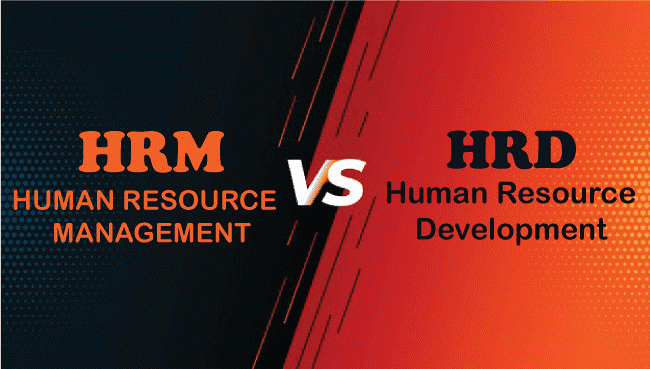In the realm of human resources, two fundamental terms often come into play: HRM and HRD. While they might seem similar at first glance, they represent distinct aspects of managing an organization’s most valuable asset – its people. Let’s delve into the nuances of HRM (Human Resource Management) and HRD (Human Resource Development) to gain a comprehensive understanding of their differences and how they contribute to organizational success.
HRM: Nurturing the Workforce
Human Resource Management (HRM) revolves around the strategic management of personnel within an organization. It encompasses a broad spectrum of responsibilities aimed at optimizing the workforce’s efficiency, productivity, and overall well-being.
Key Functions of HRM:
1. Recruitment and Selection: HRM involves attracting, identifying, and selecting the right candidates to fill vacant positions within the organization. This process entails crafting job descriptions, screening resumes, conducting interviews, and making hiring decisions that align with the company’s objectives.
2. Employee Relations: Maintaining harmonious relationships between management and employees is vital for organizational success. HRM handles employee grievances, conflict resolution, and ensures adherence to labor laws and regulations to foster a positive work environment.
3. Performance Management: HRM oversees the performance evaluation process, providing feedback, setting goals, and facilitating professional development initiatives to enhance employee performance and productivity.
4. Compensation and Benefits: Fair and competitive compensation packages are essential for attracting and retaining top talent. HRM designs and administers compensation structures, benefits programs, and incentives to reward employees for their contributions and motivate them to excel.
5. Training and Development: Continuous learning and skill development are integral to employee growth and organizational success. HRM identifies training needs, designs training programs, and facilitates learning opportunities to enhance employees’ capabilities and equip them with the skills needed to adapt to evolving job roles and industry trends.
HRD: Cultivating Talent and Potential
Human Resource Development (HRD) complements HRM by focusing on nurturing the potential and talent of individuals within the organization. It emphasizes learning, development, and career advancement to empower employees and drive organizational growth.
Key Components of HRD:
1. Training and Learning Initiatives: HRD places a strong emphasis on providing opportunities for skill enhancement and professional development. This includes formal training programs, workshops, seminars, and e-learning modules tailored to employees’ specific needs and career aspirations.
2. Career Planning and Development: Recognizing and nurturing talent is essential for fostering employee engagement and retention. HRD works closely with employees to identify their career goals, aspirations, and developmental needs, guiding them on career paths within the organization and providing resources and support to help them achieve their objectives.
3. Succession Planning: Ensuring a pipeline of capable leaders is crucial for organizational continuity and long-term success. HRD identifies high-potential employees, grooms them for leadership roles, and implements succession plans to fill key positions seamlessly when vacancies arise.
4. Performance Management: HRD aligns performance management processes with developmental goals, providing constructive feedback, coaching, and mentoring to help employees maximize their potential and achieve peak performance.
5. Organizational Learning: Encouraging a culture of continuous learning and knowledge sharing is essential for staying competitive in today’s rapidly evolving business landscape. HRD fosters a learning culture where employees are encouraged to innovate, collaborate, and share best practices to drive organizational excellence.
Bridging the Gap: Integrating HRM and HRD
While HRM and HRD serve distinct purposes, they are inherently interconnected and complementary. By integrating HRM practices with HRD initiatives, organizations can create a holistic approach to talent management that fosters employee engagement, growth, and organizational success.
Strategies for Integration:
1. Aligning Goals and Objectives: HRM and HRD strategies should be aligned with the organization’s overall goals and objectives to ensure synergy and maximize impact.
2. Collaborative Leadership: HRM and HRD professionals should work collaboratively with other functional areas of the organization to identify talent needs, address challenges, and drive strategic initiatives.
3. Data-Driven Insights: Leveraging data analytics and metrics can provide valuable insights into workforce trends, performance gaps, and learning needs, enabling HRM and HRD practitioners to make informed decisions and optimize resource allocation.
4. Continuous Improvement: Embracing a mindset of continuous improvement ensures that HRM and HRD practices evolve in response to changing business dynamics, technological advancements, and workforce demographics.
In conclusion, while HRM focuses on managing the workforce’s day-to-day operations, HRD takes a long-term perspective, nurturing talent and fostering growth and development. By understanding the nuances of HRM and HRD and integrating them effectively, organizations can unlock the full potential of their most valuable asset – their people.





